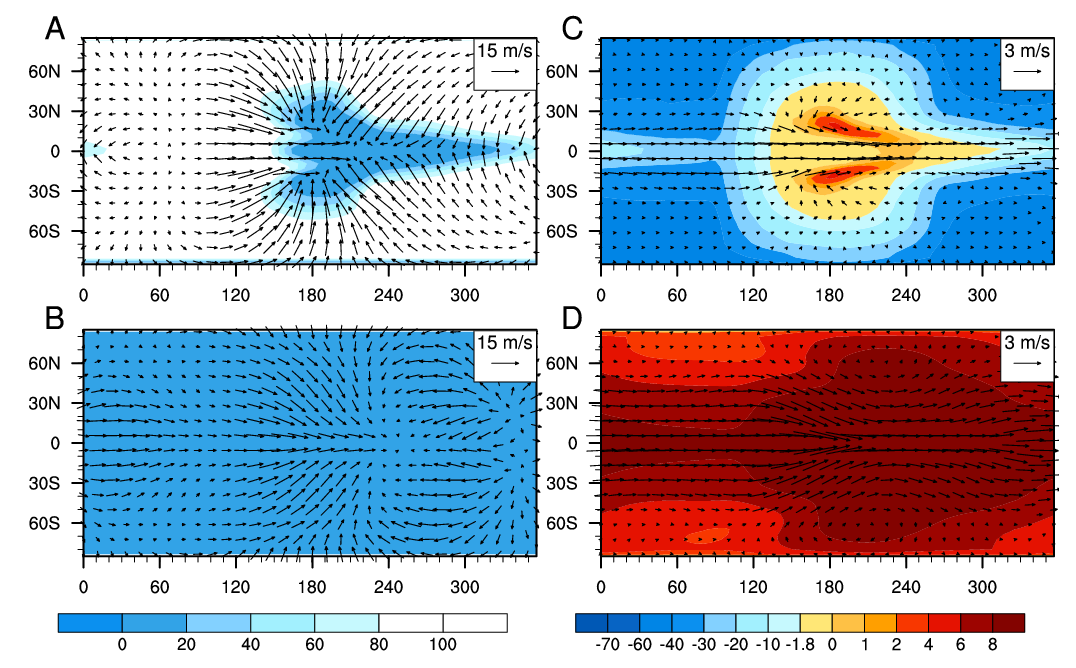Yongyun Hu and Jun Yang
Laboratory for Climate and Atmosphere-Ocean Studies, Dept. of Atmospheric and Oceanic Sciences, School of Physics, Peking University, Beijing, China, 100871
Abstract
The distinctive feature of tidally locked exoplanets is the very uneven heating by stellar radiation between the dayside and nightside. Previous work has focused on the role of atmospheric heat transport in preventing atmospheric collapse on the nightside for terrestrial exoplanets in the habitable zone (HZ) around M-dwarfs. In the present paper, we carry out the first simulation with a fully coupled atmosphere-ocean general circulation model (AOGCM) to investigate the role of ocean heat transport in climate states of tidally locked habitable exoplanets around M-dwarfs. Our simulation results demonstrate that ocean heat transport substantially extends the area of open water along the equator, showing a lobster-like spatial pattern of open water, instead of an “eyeball”. For sufficiently high-level greenhouse gases or strong stellar radiation, ocean heat transport can even lead to complete deglaciation of the nightside. Our simulations also suggest that ocean heat transport likely narrows the width of M-dwarfs’ HZ. This study provides the first demonstration of the importance of exo-oceanography in determining climate states and habitability of exoplanets.

Figure caption:Spatial distributions of sea-ice fraction and surface air temperature. Left panels: sea-ice fraction, unit: %, and right panels: surface air temperature, unit: oC. Upper panels: 355 ppmv CO2, and lower panels: 200,000 ppmv CO2. In plots A and B, arrows indicate wind velocity at the lowest level of the atmospheric model (990 hPa), with a length scale of 15 m s-1. In plots C and D, arrows indicate ocean surface current velocity, with a length scale of 3 m s-1. Note that the color scale for surface air temperature is not linear. The substellar point is at the equator and 180o in longtitude.
Citation:Y. Hu, and J. Yang, 2013: The role of ocean heat transport in climates of tidally locked exoplanets around M-dwarf Stars. PNAS, doi/10.1073/pnas.1315215111.
Paper download: http://www.pnas.org/content/early/2013/12/26/1315215111.full.pdf+html
